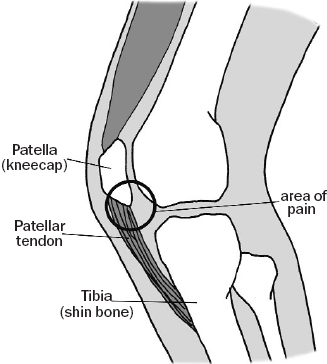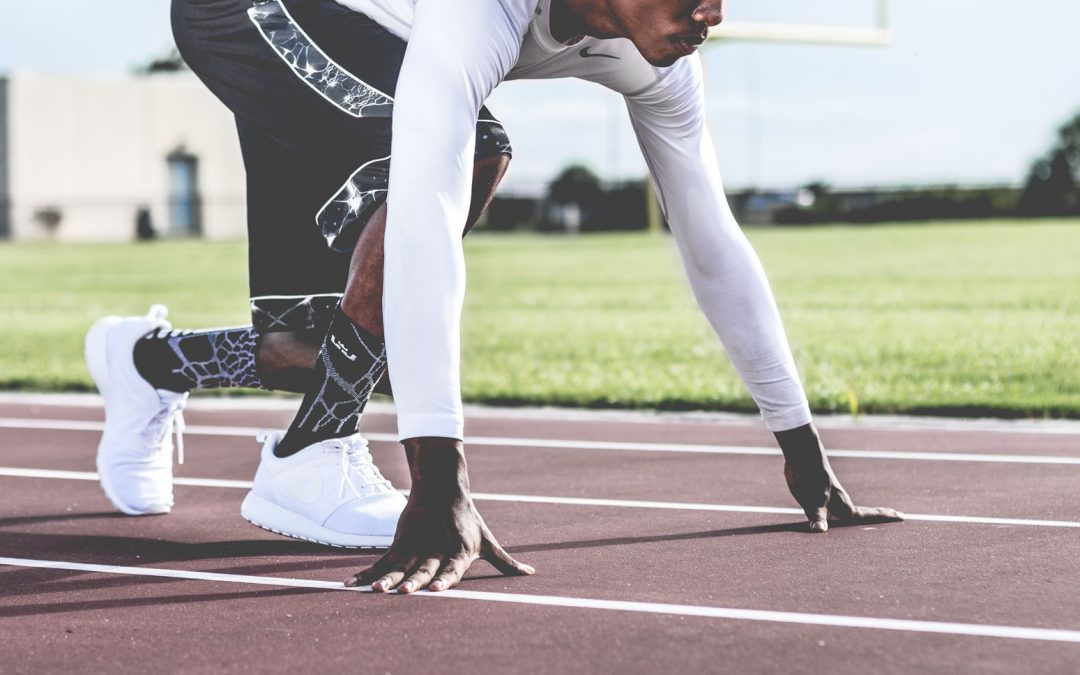RESOURCE LIBRARY
Understand and Treat Jumper’s Knee (Patellar Tendinopathy)
Patellar tendinopathy, sometimes referred to as “jumper’s knee”, is a common condition encountered in sports medicine.
However, this term is misleading as this condition is found in a wide variety of athletes, many of who do not partake in activities that include jumping.
Unfortunately, its origin and development are poorly understood, and thus it is a troublesome condition that is difficult to treat. It is considered an overuse injury characterized by activity-related, anterior (front) knee pain associated with focal patellar-tendon tenderness just inferior (below) the patella.
If the tissue is not allowed to fully recover, injury is inevitable.
Patellar tendinopathy is degenerative by nature and thus even if asymptomatic, tendon damage can be present. If the tissue is not allowed to fully recover, injury is inevitable.

A detailed look at patellar tendinopathy, or “jumper’s knee”.
Figure via www.pponline.co.uk
In individuals with short duration of symptoms complete recovery may take two to three months. In chronic cases, patellar tendinopathy recovery can be four to six months.
As a result, it forces many athletes to limit their training and competition levels for prolonged periods of time, which in turn impairs performance. Perhaps as many as 33% of athletes are unable to participate in sport for more than six months and an estimated 10% of athletes with patellar symptomatic tendinopathy have to undergo surgery.
Clearly, this condition can adversely affect the quality and longevity of participation in sport.

Don’t let knee issues prevent you from doing what you love.
Image via Unsplash
Conservative symptom management is typically attempted via the application of ice, non-steroidal anti-inflammatory drugs, taping and braces. Electrophysical modalities such as ultrasound, laser, and electrical stimulation are also used. In some cases local corticosteroid injection is beneficial. The literature finds that a combination of manual therapy and remedial exercise can very effectively manage patellar tendinopathy.
Don’t let knee pain prevent you from doing the things you enjoy! Come and see us today!
filed in
Latest Articles

The Anteriorly Tilted Pelvis
RESOURCE LIBRARY This post was written by Go! Physio Kinesiologist, Steve Dempster. The pelvis has several important functions. Its primary role is to support the weight of the upper body when sitting and to transfer this weight to the lower limbs when...

Cancer Surgery and Rehab
RESOURCE LIBRARY Go! Physiotherapy Physiotherapists at Go! Physiotherapy are equipped with clinical rehabilitation expertise, oncology specialization, manual lymphatic drainage certification (LANA), and decades of rehabilitation experience in exercise...

We are still open! How? Our response to the COVID-19 pandemic
LATEST NEWS Go! Physiotherapy Staff Dear Friends of Go! Physiotherapy, These are unprecedented times. It feels that by the time we have finished crafting this sentence, things will have changed. And we here at Go! Physio are rolling...

TeleRehab FAQs
RESOURCE LIBRARY Go! Physiotherapy Staff FREQUENTLY ASKED QUESTIONSDue to the COVID-19 pandemic affecting our community, we are committed to keeping our patients and staff safe by providing online video and phone calls (telerehab) until physical distancing measures...
Unlock Your Body’s Strength and Mobility Today
Book Online
Current patient? New, but know exactly what you’re looking for?
Contact Us
Never tried physiotherapy? Not sure where to start? Our friendly staff will guide you towards the best treatment for your situation.
Call: 604-568-4628
Email: go@gophysiotherapy.ca
